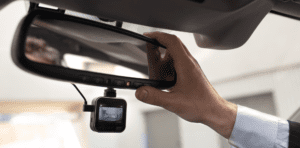Compare cheap car insurance
✔ Compare cheap car insurance quotes
✔ Over 110 insurance providers
✔ Get a quote in minutes
✔ Save up to £504*
When multiple drivers live in your home or you own several vehicles, it’s important to evaluate your car insurance options.
- Family car insurance explained
- What does family car insurance include?
- Can I add family members to my existing car insurance policy?
- Will adding a named driver on my car insurance policy affect my no-claims discount?
- Types of family car insurance
- Which family cars are the cheapest to insure?
- Compare and save
- Frequently asked questions
Opting for a family insurance plan, whether by including additional named drivers or getting a family car insurance policy, could lead to potential savings.
Family car insurance explained
Insuring the family car doesn’t have to be complicated! While there’s no such thing as a special “family car insurance policy,” you have a couple of options to cover your family members while driving the same vehicle.


The most straightforward approach is to add your licenced family members as named drivers on your policy. This gives them legal permission to drive the car, extending your cover to them. It often won’t increase your premium much, if at all!
Alternatively, you could look into a multi-car insurance policy. This handy option lets you bundle insurance for multiple vehicles in your household under one policy. It’s a convenient way to manage everyone’s cover together, and can score you a nice discount too!
No matter which option you choose, taking a few minutes to call your insurer and discuss your family’s cover needs is wise. They can explain your available discounts and make sure you’ve got all drivers properly covered.
That brings peace of mind in knowing your family and vehicles are protected! Let me know if you need any other tips for making family car insurance smooth sailing.
How much can you save on your car insurance?
What does family car insurance include?
When opting for family car insurance, whether for a singular family vehicle or multiple cars within your household, ensure that the cover you choose provides ample protection for everyone involved.


The most robust form of protection available is the fully comprehensive policy. Beyond merely covering third-party liability, this insurance also looks out for damages to your vehicle and any injuries sustained by you or your passengers.
Key features of a fully comprehensive policy usually include:
- Coverage for damages to third-party vehicles
- Compensation for injuries to others
- Coverage against fire damage to your vehicle
- Reimbursement for the complete repair cost of damages to your vehicle
- Compensation in case your car gets stolen
Additionally, several comprehensive policies extend their cover to:
- Motor legal protection: This takes care of legal expenses if someone files a claim against you.
- Personal accident cover: This provides a lump sum amount if you face severe or fatal injuries due to a car mishap.
- Breakdown cover: Assists you with on-the-spot services if your car stalls during a journey.
- Courtesy car: Offers you a provisional vehicle to utilise while your primary one is in the repair shop.
These might be inherent features of some policies, while others might offer them as add-on benefits for an extra cost.
A common misconception is that the fully comprehensive policy is the most expensive. However, when you invest time in comparing cheap car insurance quotes, you may discover that it’s, in fact, one of the more economical insurance options for your family’s vehicles.
How much can you save on your car insurance?
Can I add family members to my existing family car insurance policy?
Yes, it’s possible to add family members in your current car insurance policy.
If you’re already insured, one straightforward approach is to designate a family member as a “named driver” on your policy. By doing so, this individual gains the privilege of driving the vehicle and is insured under the same umbrella as the primary driver.


This method might be particularly economical for younger family members. For instance, placing your children as named drivers on a parent’s policy can sidestep the hefty premiums often associated with learners or young drivers.
However, there’s a crucial point to consider: the individual who drives the car most frequently should be listed as the primary or main driver. The primary driver doesn’t necessarily need to be the vehicle’s owner, but the insurance rate is typically predicated on the understanding that the primary driver is at the wheel the majority of the time.
It’s imperative that this accurately mirrors the car’s actual usage. Engaging in deceptive practices, like falsely naming someone as the primary driver to reduce the insurance fee, is termed “fronting.” Fronting is not just a minor oversight—it’s considered insurance fraud, which is a criminal activity.
If caught engaging in fronting, the consequences can be severe. Not only might your insurance be voided, but the repercussions can also extend to making future insurance purchases more challenging and cost more. In extreme cases, a criminal record might be in the offing. Always prioritise honesty and transparency with insurance matters.
How much can you save on your car insurance?
Will adding a named driver on my family car insurance policy affect my no-claims discount?
Introducing a named driver to your car insurance policy does have implications for your no-claims discount.
Specifically, if this named driver is involved in an accident which necessitates a claim, it can jeopardise the no-claims discount you’ve painstakingly accrued.


As the primary policyholder, you’d be the one responsible for making the claim, irrespective of whether you were at the wheel during the incident.
Nonetheless, if all drivers listed on your policy—including yourself and any named drivers—maintain a track record devoid of accidents and claims, your no-claims discount remains intact. This means you can proceed to accumulate the discount year after year, reaping the rewards of responsible driving.
It’s also worth noting that some insurance providers offer a “named driver no-claims discount.” This could be beneficial if the named driver later decides to procure their own policy. Always check with your insurance provider about such nuances to understand and maximise the benefits available.
How much can you save on your car insurance?
Types of family car insurance
When insuring multiple vehicles for your family, you’re presented with a choice: either amalgamate various policies under your name or consolidate them into one encompassing policy for all cars.
Linked policies
Choosing linked policies affords you a degree of customisation for each vehicle. This means you can select varying cover levels and tailor the add-ons and benefits for each car based on its usage and value.
For instance, your primary family car might be best suited for a fully comprehensive policy due to frequent use, while a secondary car that sees limited use might only require third-party, fire, and theft cover.
Another advantage is the flexibility with policy start dates. You can stagger the renewal periods, ensuring you’re not hit with simultaneous renewal charges.
One policy for all your family cars
Opting for a single policy for all your family’s vehicles provides streamlined management. Typically, every car and driver on this policy would receive identical cover.
However, the amount of compulsory excess might differ between vehicles. One of the conveniences here is a unified renewal date, simplifying paperwork and tracking.
On the flip side, if you choose to pay your premiums annually, you may face a more substantial bill given the collective cover.
It’s worth consulting with insurance experts or conducting thorough research to determine the most cost-effective and practical solution tailored to your family’s specific needs.
How much can you save on your car insurance?
Which family cars are the cheapest to insure?
The cost of insuring a car is influenced by several factors, including the car’s value, your personal driving history, and the specifics of the insurance company you select. As such, before zeroing in on a family car to purchase, it’s prudent to get an estimate of its insurance costs.


When contemplating a family car, it’s not just about the aesthetics or brand. Focus on aspects like the car’s size – will it accommodate your family comfortably? Safety features – how well is the car equipped to protect its occupants?
Consider its fuel efficiency – will it be economical in the long run? And, crucially, you should factor in the car insurance group it belongs to.
In the UK, insurance providers categorise cars into groups numbered from 1 to 50 for the purpose of determining premiums. A car’s placement in these groups can significantly influence insurance costs.
Higher group numbers generally indicate more premium models, which can be pricier to buy, mend, or replace, thereby leading to steeper insurance fees. Conversely, cars placed in the lower tiers of these groups are often more affordable to insure.
The good news is that there’s a plethora of family-friendly cars positioned in the lower insurance groups. This means you can find a vehicle that marries functionality, comfort, and affordability, ensuring you’re not paying exorbitantly for insurance.
It might be beneficial to consult car-buying guides or insurance comparison tools to make an informed choice.
How much can you save on your car insurance?
Compare family car insurance and save
Interested in getting the most value for your family’s car insurance? A thorough comparison of quotes is your best strategy.
While Comparoo may not cater to multi-car insurance comparisons at this time, it’s great for single-vehicle policy quotes.
By inputting details for each of your cars or adding named drivers, you can ensure that you’re securing both a competitive rate and the appropriate cover for every member of your household. It’s a strategic approach to comprehensive protection without undue expense.
Compare cheap family car insurance quotes
Frequently asked questions
If a family member has a history of driving infractions, prior penalty points, or is below 25 years old, securing individual policies might be more cost-effective.
However, to determine the best option, it’s best to compare car insurance quotes from different insurance companies with Comparoo.
Temporary car insurance offers cover for a specified driver over a predetermined short duration, typically ranging from an hour to 28 days.
If, for instance, your child returns home for a holiday and wishes to use the family vehicle, this insurance could be suitable. While the cover mirrors that of the primary driver, the excess might be increased.
Yes. Even if you’re living together without being married or in a civil partnership, you and your partner can get family car insurance. Some policies might even allow roommates residing at the same address to enroll.
Typically, family insurance cover is limited to vehicles and drivers sharing the same home.
However, there are providers who extend cover to direct family members residing elsewhere. This can be particularly beneficial for those with children going to college.
Find out about student car insurance.
Yes, for family cars with linked insurance policies, it’s typical to permit different renewal dates for each vehicle.
This offers flexibility, so you don’t need to align all renewals to commence simultaneously.
You can only drive a car covered by the family insurance if you are listed as a named driver on the policy.
Car insurance blog
Video by Kampus Production










